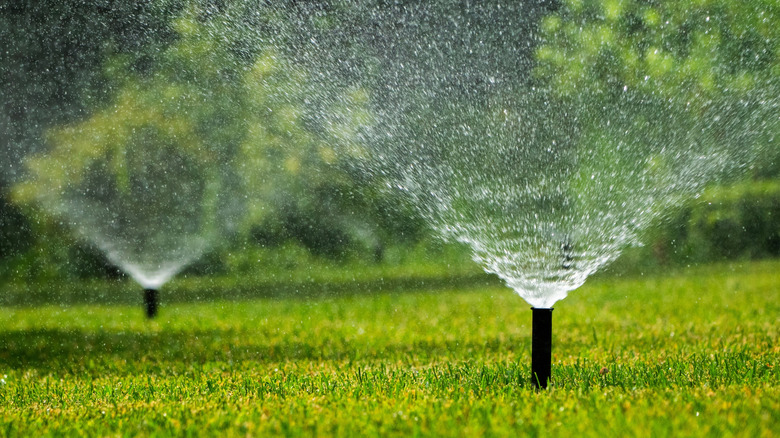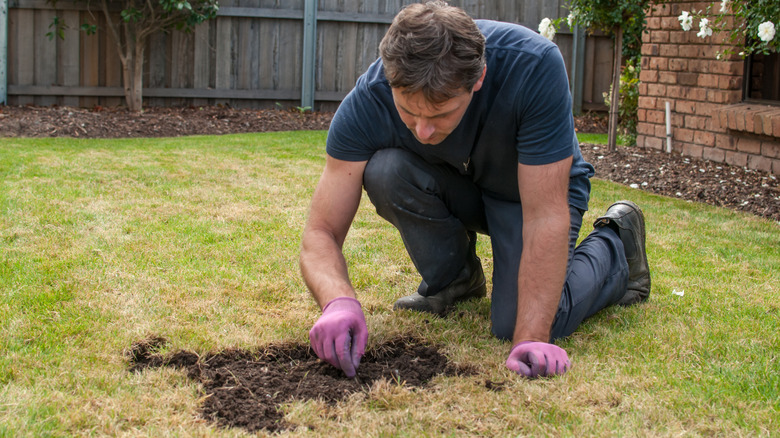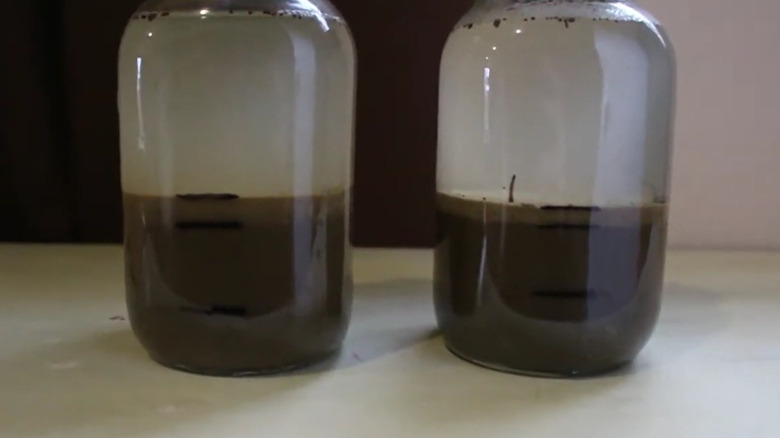How You Water Your Lawn Could Be Ruining Your Soil, Depending On What Type You Have
The trickiest part about growing a healthy lawn is knowing when it's time to water. Some might tell you to water your lawn every week, on a regular watering schedule, or even twice a day if you live in a drought-prone area or are experiencing a heatwave. The truth is, while hot weather and dry spells do impact the health of your lawn, it's the amount of moisture in the soil that matters most. Nevertheless, different types of soil retain moisture differently, and you might be ruining your soil if you don't know how to water it properly.
Generally speaking, there are four types of common garden soils: sand, clay, silt, and loam. Sandy soils are what we call light and coarse soils. They have large sand particles and large spaces between those particles, making them unable to hold water for a long while. Clay is the total opposite of that. If you have clay soil, your soil will retain moisture and organic matter for much longer than sandy soil. Silt has an intermediate particle size and moderate spacing between those particles. It is considered the middle ground between the two. If your soil is a proportionate mixture of these three types, then it's considered a loam soil. Many gardeners consider loam soil the perfect type of soil in which to grow grass. However, over-watering or under-watering any of these soil types can cause a huge issue for your lawn and lead to an unusable soil.
Lawn watering mistakes that are ruining your soil and how to avoid them
Each type of soil has its own strengths and weaknesses. Sandy soils, for example, are fast-draining soils. The wide spacing between their particles allows for water to move fast through them, reaching the grass roots quickly. This also means that the soil will dry much faster. If you are watering your lawn infrequently, your soil will become too dry and lose all its moisture. To keep the integrity of sandy soils and help your lawn thrive on them, you'd want to water lightly but frequently.
In the case of clay soil, the particles are much smaller and closer to each other, giving them the ability to hold water for much longer. Even though this can be great for your grass, it can also lead to waterlogging if you over-water your lawn. Waterlogged soil will prevent your plants from absorbing oxygen and other nutrients, causing root damage or even killing your grass. The best method to deal with clay soils is watering deeply for long periods, but much less frequently.
If you have loamy or loamy silt soil, your plants will have the best of both worlds: good drainage and sustained moisture. However, this also means that you'll need to monitor your soil more closely to figure out when it has become dry and when it is too wet for your plants. A balanced watering approach is key to ensuring that your soil remains moist, but not waterlogged.
Testing your soil type at home
Understanding the type of soil you have and how to deal with it will help you grow a lush green lawn on healthy soil. There are many DIY tests to check your soil type and health at home. A simple method involves reusing an old mason jar for a soil composition test. All you will need for this test is a clean, empty mason jar with a tight lid, a small shovel to pick up a sample of your soil, about 3/4 cup of soil, and some water.
To get started, go to a part of your garden that is undisturbed, meaning it's not near sewage pipes or roads, and has not been sprayed with fertilizers. Then, collect a soil sample using the shovel. Put the collected sample in the jar and fill it with water. Shake the jar for around two minutes and let it sit for a while undisturbed until it settles.
This step can take up to two days, but once the sample has separated into the soil's different components, you can now check what your soil is mostly composed of. Sand and rock particles will be at the bottom, silt particles right above them, and clay right at the top. Above the clay layer, you might also see organic matter floating on the surface. The thickest layer will indicate your soil type. For example, if the lowest layer is the thickest, then you have sandy soil. However, if you have equal parts sand and silt, and a bit less clay, then you have a perfect loamy soil.


